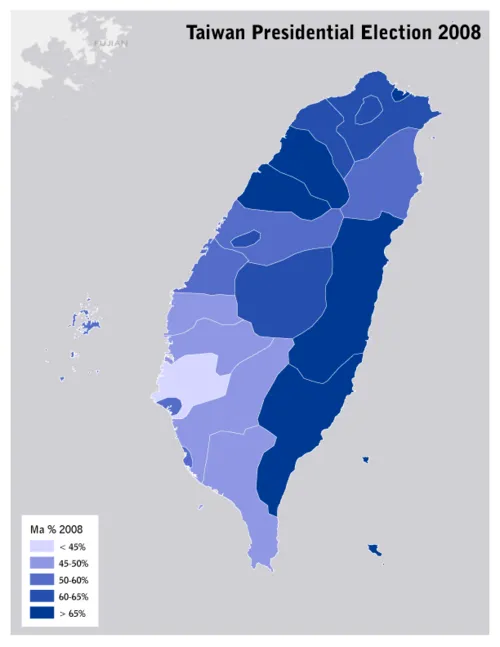
Ahead of Vote, Mapping Taiwan's Presidential Election in 2008
While we watch the GOP candidates vie for their party’s nomination, the Taiwanese (including some of my wife’s family) are voting in presidential elections of their own — a race that could affect the U.S. relationship with the island nation and China:
Taiwanese voted on Saturday for their next president and parliament, an election being closely monitored by China and the United States as they look for stability in the region at a time of political transition for both superpowers.
The votes will be tallied overnight, but I mapped the regional divide from the last election, in 2008, which propelled nationalist Ma Ying-jeou to power. His Kuomintang party has pushed for warmer relations with China. Four years ago, he defeated Frank Hsieh, of the Democratic Progressive Party, which favors independence from China and a distinct identity from the Middle Kingdom.
This map shows administrative areas won by both candidates. Ma’s party is stronger in the north, where business groups in large population centers like the capitol of Taipei generally prefer better relations with China:

This map shows the intensity of Ma’s support in 2008. Again, the regional divide is evident (he won with 58 percent of the vote, so the maps have different totals):

And here’s Hsieh’s vote:

We’ll see what happens in the morning in the contest between Ma and pro-independence DPP candidate Tsai Ing-wen. Though Ma won easily four years ago, this year’s contest is too close to call. This time, a third-party candidate, James Soong, is in the race. He threatens to pull votes away from Ma’s party, as he did in 2000.
More maps tomorrow…